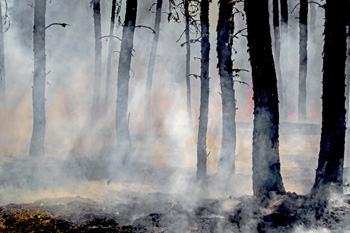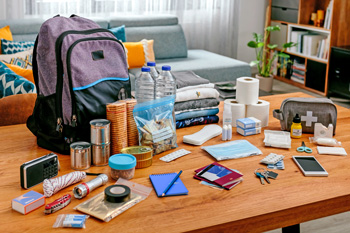Household Preparedness
- Get Prepared
- Emergencies
- Current: Household Preparedness
During a disaster, no individual is left unaffected. The Federal Emergency Management Agency National Household Survey indicates many Americans say they would not be ready in the event of an emergency. Spending time to prepare, even a little, before an emergency arises can help save lives.
Household Preparedness Tips
Quick Tips
- Become familiar with the types of disasters that occur in your area.
- Inform yourself about disaster plans and procedures by your employer, school and municipality.
- Create an emergency plan and practice it.
- Develop a disaster kit that has many items you will need during an emergency, which could last several days.

Be Informed
Knowing what to expect and plan for can help individuals stay calm when an emergency occurs.
- Be aware of all possible disasters that occur in local areas.
- Learn the difference between weather watches and warnings.
- Learn about disaster preparedness programs offered in local communities.
- If applicable, understand emergency plans of local schools.
- Study emergency plans created by employers.

Make a Plan
- Emergency plans need to be tailored to the specific needs of the household.
- Create a list of meeting locations and emergency phone numbers.
- Make a map of potential neighborhood escape routes.
- Complete the IDHS online form to help create an emergency plan.
- Practice the plan frequently.
- Share information about emergency preparation so everyone can be ready.
- Create a waterproof disaster kit.

Build a Disaster Kit
In severe emergencies, it can take up to three days for assistance to arrive. Disaster kits should be able to support the household during that time. Consider some of the following as part of the household disaster kit:
- Non-perishable food and water for three days, including one gallon of water per person, per day
- Battery or hand-crank weather radio
- Flashlight
- Extra batteries
- First aid kit
- Extra clothing, sturdy shoes, blankets and personal hygiene items
- List of emergency phone numbers
- Copies of important documents (photo ID, social security card, etc.)
- Cash in small bills (power outages can limit use of ATMs and credit cards)
- Special items based on specific needs (baby formula, pet supplies, extra medication, etc.)
For a more comprehensive list of items for a disaster kit, visit the Disaster Kit page.
Resources
- Make a Plan
Ready.gov - Disaster Preparedness Plan
American Red Cross
